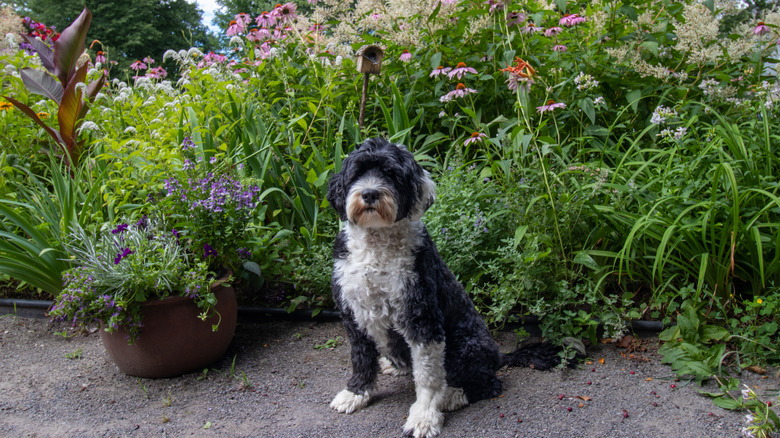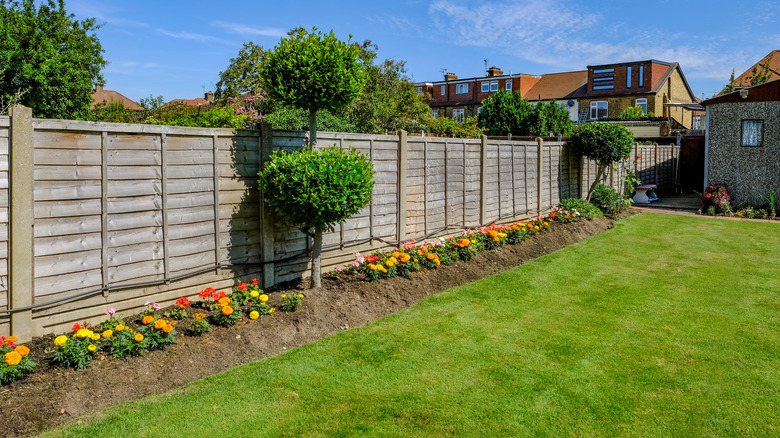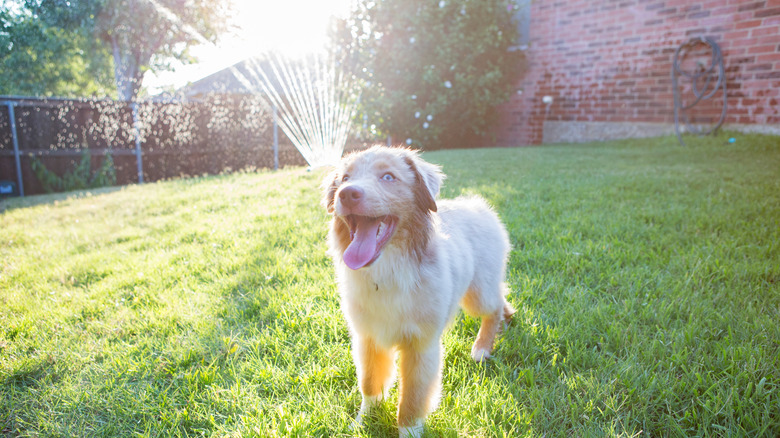How To Keep Neighborhood Dogs From Damaging Your Precious Lawn
Walking into a pile of poo on your lawn is off-putting. Add to that dug-up garden beds and strawy tuft patches, and you'll be left wondering why the neighborhood dogs can't find another place to prance about and finish their business. Since you can't really admonish the dog (or you could, but they'll return anyway), what you can and should do is speak to your neighbors or dog walkers. Shooting off a text or a written note doesn't cut it as you're more likely to come across as standoffish and hostile. Instead, give them the benefit of the doubt, communicate your problems clearly in a non-accusatory tone, and remind them to hold their dogs back.
If friendly conversations prove unfruitful, secure proof by capturing the destructive dogs in action then reach out to your HOA or local authorities. Now, sit back while the authorities fine the unhelpful canine owners. Remember, this is a time-consuming process and your landscape will suffer in the meantime, so explore other humane options to keep dogs from munching on your garden like putting up barriers or spritzing dog-repellent sprays. If those don't work, install motion-activated sprinklers. They're adept at keeping all pests off your property, including the furbabies.
Fence off your yard to bar dog entry
The most effective and permanent method to prevent dog damage is stopping trespassers in their tracks. Luckily, there are multiple ways you can go about it. Putting up a sign insinuating the tuft has undergone pesticide treatment or that the lawn has pet-unfriendly, toxic plants can have several dog walkers steering clear of your lawn. Unfortunately, unleashed, unsupervised, roaming dogs can't read and that's where physical barriers come in. Installing small picket fences or landscaping gates usually works on short-legged marauders as they might have a hard time jumping over the line. Plus, they're easy on the eyes and add curb appeal. However, they aren't practical when dealing with bigger breeds.
Swapping out wooden fences for plant hedges is another option to dog-proof your yard while lending privacy and sound insulation. While you're at it, grow densely packed rows of marigolds, calendulas, or other herbaceous plants whose aroma dogs find irritating. If you're dealing with diggers, install chicken wires, cultivate sedum plants, or place piles of rock-filled mulch around the perimeter. Electronic dog fences work, too, by beeping shrilly at unhesitant, four-legged intruders. They're best left for extreme cases, assuming they aren't restricted under local laws.
Sprays and gardening equipment to ward off dogs
Canines have an obsession with marking their territories and emptying their bladders at the same spot every day. Dog-repellent sprays weaponize this habit to banish their presence. Commercial options like Liquid Fence Dog & Cat Repellent and Havahart's Critter Ridder dispel the distinctive wee odor that dogs seek and instead overwhelm their senses (and yours) with a stench reminiscent of rotten eggs. These products mostly contain organic ingredients. For instance, liquid fence includes oils made of citronella, cinnamon, and garlic. They're safe to use in lawns and garden beds plus they are available in both liquid and granular variants.
The downside is that dog-repellant sprays don't persist for long, especially after rains, and need constant reapplications. Moreover, they work better as a learned behavior, meaning dogs steer clear only after habitually ignoring the area over time. Having said that, some users have reported that the product is ineffective, so take your call. Although DIY repellents are garnering attention, they have their shortcomings. For example, vinegar is non-selective and kills the surrounding vegetation. In contrast, citrus peels attract other foraging critters. However, what's worked for most gardeners is switching to motion-activated sprinklers that blast the pooches (and their owners) with water as they approach and send them packing.


